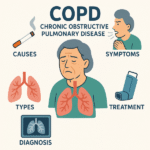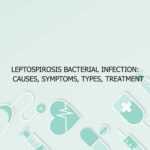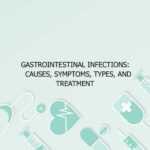Now Reading: How to Get Rid of Spider Veins Naturally on Legs
- 01
How to Get Rid of Spider Veins Naturally on Legs
How to Get Rid of Spider Veins Naturally on Legs
Spider veins are small, dilated blood vessels that appear close to the surface of the skin, usually on the legs and sometimes on the face. They often look like thin red, blue, or purple lines, resembling a spider’s web—hence the name. While generally harmless, spider veins can be a cosmetic concern and, in some cases, cause mild discomfort like itching or burning. Fortunately, several natural remedies and lifestyle changes can help reduce their appearance and prevent new ones from forming.
Understanding Spider Veins
Spider veins occur due to weak or damaged valves in the veins. Normally, veins have one-way valves that help keep blood flowing toward the heart. When these valves fail, blood can pool in the veins, causing them to bulge or branch out. Risk factors include genetics, age, pregnancy, obesity, prolonged standing or sitting, and hormonal fluctuations.
Natural Remedies for Spider Veins
Regular Exercise
Exercise is crucial for improving circulation and strengthening the muscles around veins, especially in the legs. Walking, swimming, cycling, and yoga are excellent choices that help reduce pressure in the leg veins and encourage proper blood flow. Stretching and calf raises can also be beneficial.
Elevating the Legs
Raising your legs above heart level for 15-20 minutes several times a day can significantly improve circulation and reduce pressure in the veins. This simple habit can ease swelling and prevent the formation of new spider veins.
Wearing Compression Stockings
Compression stockings apply gentle pressure to your legs, helping veins push blood more efficiently toward the heart. Though not a cure, they can significantly reduce symptoms and slow the progression of spider veins when used consistently.
Herbal Remedies
Several herbs are known to improve vein health and circulation. Notable ones include:
- Horse Chestnut Extract: Reduces inflammation and strengthens vein walls.
- Witch Hazel: Applied topically, it can relieve itching and inflammation.
- Gotu Kola: Boosts collagen and supports vascular integrity.
- Butcher’s Broom: Improves circulation and vein tone.
These herbs can be used as creams, teas, or supplements under medical guidance.
Apple Cider Vinegar
Apple cider vinegar is a popular natural remedy for many ailments, including spider veins. When applied topically, it can improve blood circulation and reduce inflammation. Soak a cloth in diluted apple cider vinegar and apply it to the affected area for 15-20 minutes daily.
Anti-Inflammatory Diet
Consuming a diet rich in anti-inflammatory foods can support vein health and prevent further damage. Focus on foods high in antioxidants, fiber, and vitamins C, E, and K:
- Berries, citrus fruits, spinach, kale, and bell peppers
- Whole grains, legumes, and seeds
- Fatty fish like salmon and sardines
- Green tea and turmeric
Avoid processed foods, excess salt, alcohol, and trans fats.
Massage Therapy
Gentle massage can stimulate circulation and reduce swelling in the legs. Use upward strokes toward the heart with essential oils like cypress, lavender, or chamomile mixed in a carrier oil. Always consult a professional if you have a history of deep vein thrombosis (DVT).
Dry Brushing
Dry brushing with a natural bristle brush before bathing can boost lymphatic drainage and exfoliate the skin, potentially improving vein appearance. Use circular motions and brush toward the heart for 5-10 minutes.
Hydration and Skin Care
Keeping the skin hydrated with moisturizers and drinking plenty of water helps maintain skin elasticity and vein flexibility. Products containing vitamin K can also support blood clotting and reduce discoloration.
Weight Management
Maintaining a healthy weight reduces pressure on the legs and veins. A balanced diet and regular exercise can help in shedding extra pounds, thereby decreasing the likelihood of new spider veins developing.
Table: Natural Remedies for Spider Veins on Legs
| Natural Remedy | How It Helps | Application Method | Frequency |
|---|---|---|---|
| Exercise | Improves circulation & muscle tone | Walking, yoga, swimming | 30 minutes daily |
| Leg Elevation | Reduces vein pressure & swelling | Elevate legs above heart level | 2–3 times daily, 15–20 mins |
| Compression Stockings | Promotes blood flow and reduces symptoms | Wear during the day | Daily |
| Horse Chestnut Extract | Anti-inflammatory, strengthens veins | Topical or oral supplement | As directed |
| Apple Cider Vinegar | Improves circulation topically | Soak cloth and apply to veins | 15–20 mins daily |
| Anti-inflammatory Diet | Supports vascular health | High-fiber, antioxidant-rich foods | Ongoing |
| Massage with Essential Oils | Stimulates blood flow | Upward strokes toward the heart | Few times per week |
| Dry Brushing | Boosts circulation and lymphatic flow | Brush skin toward the heart before bath | Daily |
| Hydration & Skincare | Maintains skin elasticity and reduces visibility | Drink water, moisturize with vitamin K | Daily |
| Weight Management | Reduces pressure on veins | Balanced diet and activity | Ongoing |
FAQs About Natural Remedies for Spider Veins
What causes spider veins to appear on the legs and how can natural remedies help?
Spider veins are caused by weakened or damaged valves in the veins that lead to blood pooling and the formation of visible, thread-like veins just under the skin. Contributing factors include genetics, prolonged standing, hormonal changes, pregnancy, obesity, and aging. Natural remedies can help by strengthening the veins, improving blood circulation, and reducing inflammation. For instance, regular exercise helps pump blood more efficiently, while herbal supplements like horse chestnut and butcher’s broom can support vein health. Topical treatments such as witch hazel or diluted apple cider vinegar can offer symptomatic relief. Moreover, lifestyle changes like weight management, an anti-inflammatory diet, and avoiding long periods of sitting or standing also play crucial roles in preventing and managing spider veins.
Are there specific foods that can reduce the appearance of spider veins?
Yes, diet plays a significant role in the natural management of spider veins. Foods rich in antioxidants, flavonoids, and vitamins C, E, and K are particularly beneficial. Vitamin C helps in the production of collagen and elastin, which are essential for blood vessel strength. Citrus fruits, berries, leafy greens, and bell peppers are great sources. Vitamin K is crucial for healthy blood clotting and may help reduce the appearance of spider veins; it is found in spinach, broccoli, and cabbage. Omega-3 fatty acids in fatty fish like salmon improve circulation, while foods high in fiber prevent constipation—a factor that can worsen vein pressure. Avoiding processed foods, sugar, alcohol, and excessive salt can further support vascular health.
How does exercise help in treating spider veins naturally?
Exercise is one of the most effective natural methods for managing spider veins. It promotes healthy blood flow, strengthens leg muscles, and helps push blood upward through the veins toward the heart. Activities like walking, cycling, swimming, and yoga reduce pressure in the lower limbs and decrease the likelihood of blood pooling in the veins. Moreover, regular movement prevents venous stasis—a condition where blood flow slows or stops in the veins. Calf-raising exercises and leg stretches specifically target the muscle pumps in the lower legs, which are essential for venous return. Even simple habits like standing up and walking for a few minutes every hour during long periods of sitting can significantly contribute to vein health.
Is dry brushing safe and effective for spider veins?
Dry brushing is a gentle, natural technique that may improve the appearance of spider veins by promoting circulation and lymphatic drainage. It involves brushing the skin in upward, circular motions using a soft, natural-bristle brush before showering. This technique exfoliates dead skin cells and stimulates blood flow to the surface, which may help reduce the visibility of spider veins over time. While not a cure, it can complement other natural treatments. It’s generally safe for most skin types, but individuals with sensitive skin, open wounds, or skin conditions like eczema should avoid dry brushing or consult a dermatologist before starting. Consistency, gentleness, and proper technique are key for best results.
Can herbal supplements completely get rid of spider veins?
Herbal supplements can be a helpful part of a natural treatment plan for spider veins, but they are not typically a complete cure. Supplements like horse chestnut extract, gotu kola, butcher’s broom, and grape seed extract contain compounds that strengthen blood vessels, reduce inflammation, and improve circulation. These herbs may reduce symptoms such as aching, swelling, and visible veins. However, they work best when combined with lifestyle changes such as regular exercise, healthy diet, and weight management. Additionally, their effectiveness varies among individuals, and it may take weeks or months to notice visible improvement. Always consult a healthcare provider before beginning any herbal regimen to ensure safety and proper dosage.
How does weight loss impact spider veins on the legs?
Excess weight puts additional pressure on the veins in the legs, which can contribute to the formation and worsening of spider veins. Losing even a small amount of weight can help reduce this pressure and improve overall vein function. When combined with regular exercise and a balanced, anti-inflammatory diet, weight loss can significantly reduce the appearance of existing spider veins and prevent new ones from forming. Additionally, weight loss improves mobility, circulation, and lymphatic drainage, all of which are beneficial for vascular health. It’s important to approach weight loss gradually and sustainably through healthy lifestyle choices, rather than crash dieting, which can stress the body and worsen vein issues.
Can topical remedies like apple cider vinegar really reduce spider veins?
Apple cider vinegar is a popular natural remedy often used topically to reduce the appearance of spider veins. Its acidic properties may improve blood circulation in the affected area, helping veins shrink and become less visible over time. To use it, dilute with water and soak a cloth, applying it to the affected areas for 15–20 minutes daily. While some people report visible improvements, scientific evidence supporting this remedy is limited. However, it is a low-cost, low-risk method that can be included in a comprehensive natural treatment plan. Results can vary depending on consistency, severity of spider veins, and individual skin sensitivity.
Are compression stockings considered a natural remedy for spider veins?
While compression stockings are a medically recommended treatment, they are often considered a non-invasive, natural approach to managing spider veins. They work by applying gradual pressure to the legs, promoting blood flow back toward the heart and reducing the pooling of blood that leads to spider veins. They also help alleviate symptoms such as leg fatigue, swelling, and discomfort. Compression stockings are available in various levels of firmness, and it’s best to consult a healthcare provider to determine the right type for you. Wearing them regularly, especially during long periods of sitting or standing, complements other natural treatments and can significantly prevent worsening of spider veins.
How long does it take for natural remedies to show results?
Natural remedies generally require patience and consistency. Unlike medical treatments like sclerotherapy or laser therapy that offer faster results, natural methods may take several weeks to months to show visible improvement. The timeline depends on the severity of the spider veins, the remedies used, and individual health factors such as age, weight, circulation, and lifestyle. For instance, exercising daily and following a vein-friendly diet can gradually improve circulation and reduce symptoms, while herbal supplements may take a few months to enhance vein strength. It’s important to maintain realistic expectations and understand that natural treatments focus more on preventing progression and promoting overall vascular health than offering immediate cosmetic results.
Can lifestyle changes alone prevent the recurrence of spider veins?
Yes, consistent lifestyle changes can significantly reduce the risk of developing new spider veins and slow the progression of existing ones. Regular physical activity, a healthy anti-inflammatory diet, adequate hydration, weight management, and good posture all contribute to improved vein health. Avoiding long periods of sitting or standing, wearing comfortable shoes, and taking movement breaks during sedentary activities are also essential habits. While these changes may not eliminate existing spider veins, they form the foundation for long-term vascular health and can enhance the effectiveness of any additional natural or medical treatments. Prevention is especially important for those with a family history of venous disorders.









